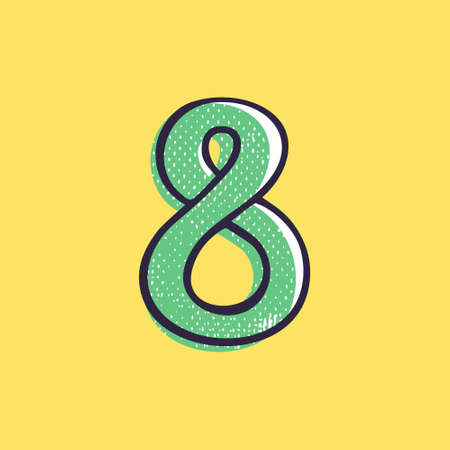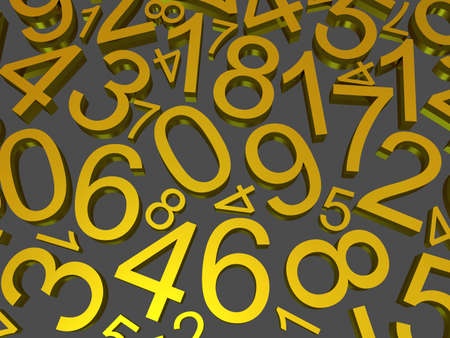1. Introduction to the Zodiac Systems
The zodiac systems are fascinating tools that many cultures use to understand personality traits, predict fortunes, and celebrate cultural traditions. In this article, we’ll explore the Western and Chinese zodiac systems, focusing on how they developed, what makes them unique, and why they still matter today.
Overview of the Western Zodiac
The Western zodiac is based on a circle of twelve constellations that align with the sun’s path through the sky over the course of a year. Each sign covers roughly one month and is associated with specific personality traits. These signs are:
| Sign | Date Range | Symbol |
|---|---|---|
| Aries | March 21 – April 19 | Ram |
| Taurus | April 20 – May 20 | Bull |
| Gemini | May 21 – June 20 | Twins |
| Cancer | June 21 – July 22 | Crab |
| Leo | July 23 – August 22 | Lion |
| Virgo | August 23 – September 22 | Virgin |
| Libra | September 23 – October 22 | Scales |
| Scorpio | October 23 – November 21 | Scorpion |
| Sagittarius | November 22 – December 21 | Archer |
| Capricorn | December 22 – January 19 | Goat |
| Aquarius | January 20 – February 18 | Water Bearer |
| Pisces | February 19 – March 20 | Fish |
The Western zodiac has its roots in Babylonian and Greek traditions, dating back thousands of years. It’s closely connected to astronomy and astrology, making it popular in many Western countries.
An Introduction to the Chinese Zodiac
The Chinese zodiac works differently. Instead of months, it uses a twelve-year cycle, with each year represented by an animal. The animals are:
| Zodiac Animal (English) | Zodiac Animal (Chinese) | Zodiac Order Number |
|---|---|---|
| Rat | 鼠 (Shǔ) | 1st Year |
| Ox | 牛 (Niú) | 2nd Year |
| Tiger | 虎 (Hǔ) | 3rd Year |
| Rabbit | 兔 (Tù) | 4th Year |
| Dragon | 龙/龍 (Lóng) | 5th Year |
| Snake | 蛇 (Shé) | 6th Year |
| Horse | 马/馬 (Mǎ) | |
| Monkey | 猴 (Hóu) | 9th Year |
| Rooster | 鸡/雞 (Jī) | 10th Year |
| Dog | 狗 (Gǒu) | 11th Year |
| Pig | 猪/豬 (Zhū) | 12th Year |
The Chinese zodiac goes back more than two thousand years to ancient China. It plays a big role in Chinese New Year celebrations and family traditions, often influencing important life decisions like marriage or naming children.
Cultural Significance Around the World
Both zodiacs are more than just fun personality quizzes—they’re woven into people’s daily lives. In the United States, horoscopes based on the Western zodiac are common in magazines and online, while in Chinese communities across America, the lunar new year and animal signs are celebrated with parades, decorations, and family gatherings.
2. Structural Differences Between Western and Chinese Zodiacs
Calendar Systems: Solar vs. Lunar
One of the biggest differences between Western and Chinese zodiac systems is the calendar they use. The Western zodiac, also called the astrological zodiac, is based on the solar calendar. This means it follows the path of the sun throughout the year. On the other hand, the Chinese zodiac is tied to the lunar calendar, which tracks the cycles of the moon. As a result, Chinese New Year, which marks the start of a new zodiac sign, falls on a different date each year—usually between late January and mid-February.
Comparison Table: Calendar Systems
| Zodiac System | Calendar Type | Start of Zodiac Cycle |
|---|---|---|
| Western Zodiac | Solar (Gregorian) | Fixed dates (e.g., Aries: March 21 – April 19) |
| Chinese Zodiac | Lunar | Varies each year (Chinese New Year) |
Number and Types of Signs
The Western zodiac features 12 signs, each represented by an animal or symbol from Greek mythology, like Leo (the Lion) or Aquarius (the Water Bearer). These signs are linked to specific constellations in the sky. In contrast, the Chinese zodiac also has 12 signs but all are animals found in traditional Chinese culture—such as Rat, Ox, Tiger, and so on.
Comparison Table: Number and Types of Signs
| Zodiac System | Number of Signs | Types of Signs |
|---|---|---|
| Western Zodiac | 12 | Mythical symbols & animals (e.g., Scorpio, Sagittarius) |
| Chinese Zodiac | 12 | Animals (e.g., Rabbit, Dragon) |
How Zodiac Signs Are Determined
The method for figuring out your zodiac sign is quite different in each system. In Western astrology, your sign depends on your birthdate within a specific month range. For example, someone born on April 5 would be an Aries. In Chinese astrology, your sign is determined by your birth year according to the lunar calendar. If you were born in 1990, you would be a Horse in Chinese zodiac terms.
Comparison Table: Determining Zodiac Signs
| Zodiac System | How Sign Is Determined | Example |
|---|---|---|
| Western Zodiac | Birth month and day (solar calendar) | April 5 = Aries |
| Chinese Zodiac | Birth year (lunar calendar) | 1990 = Horse Year |
The differences in structure between these two zodiac systems show how cultural traditions shape how people view personality traits and destinies. Each system uses its own unique way to connect individuals with cosmic cycles and ancient stories.

3. Similarities in Symbolism and Interpretation
Both Western and Chinese zodiac systems have been used for centuries to offer insights into personality, fate, and life’s journey. While their origins are different, you might be surprised at how much these two systems have in common when it comes to interpreting the human experience.
Common Themes in Personality Traits
Both zodiacs use symbols—animals or constellations—to reflect core personality traits. For example, Aries in the Western zodiac is known for being energetic and bold, similar to the Dragon in the Chinese zodiac, which represents power and ambition. Many people enjoy reading about their zodiac sign because it feels like a personal reflection of who they are.
| Western Zodiac Sign | Personality Trait | Chinese Zodiac Animal | Similar Trait |
|---|---|---|---|
| Leo (Lion) | Confident, Charismatic | Tiger | Brave, Confident |
| Cancer (Crab) | Nurturing, Protective | Rabbit | Caring, Gentle |
| Sagittarius (Archer) | Adventurous, Optimistic | Horse | Energetic, Free-Spirited |
| Taurus (Bull) | Loyal, Persistent | Ox | Hardworking, Reliable |
The Role of Fate and Destiny
Both zodiacs connect individual lives with larger cosmic patterns. In the West, people often read horoscopes to get predictions about love, career, and luck based on planetary movements. In Chinese tradition, birth year animals are believed to influence your destiny and compatibility with others. The idea that your birth date can guide your path is a shared belief between both systems.
Life Predictions and Guidance
Whether you’re checking your daily horoscope or consulting a Chinese zodiac calendar for auspicious dates, both traditions provide advice and predictions about important life events. This includes guidance on relationships, career moves, and personal challenges. Many people see these predictions as fun ways to gain confidence or find direction during uncertain times.
4. Unique Insights and Cultural Impact
Distinctive Beliefs in Western and Chinese Zodiac Systems
The Western and Chinese zodiac systems each have unique beliefs that shape how people see themselves and others. In the West, the zodiac is based on twelve star signs connected to astrology, such as Aries, Taurus, and Gemini. These signs are linked to personality traits, luck, and even daily horoscopes. In China, the zodiac uses a 12-year cycle represented by animals like the Rat, Dragon, or Pig. Each animal brings its own qualities, such as wisdom or bravery, that are believed to influence those born in that year.
Key Belief Differences
| Zodiac System | Main Focus | Time Cycle | Traits Emphasized |
|---|---|---|---|
| Western Zodiac | Star signs/astrology | Monthly (based on birth date) | Individual personalities and compatibility |
| Chinese Zodiac | Animal years/lunar calendar | Yearly (based on birth year) | Character traits, fortune, and destiny |
Influence on Daily Life and Relationships
In the United States, many people read daily horoscopes for fun or advice. Some even plan dates or important events based on their astrological sign. Compatibility between signs often comes up in conversations about friendship or romance.
In China, the zodiac plays an important role in major life decisions. People might choose wedding dates, name babies, or even make business deals based on their animal sign’s fortune for the year. Family elders may encourage marriages between compatible animal signs to ensure harmony.
Examples of Zodiac Influence in Daily Life
| Country | Zodiac Use in Daily Life | Zodiac Role in Relationships |
|---|---|---|
| U.S. | Reading horoscopes; birthday gifts with star sign symbols; themed parties | Talking about compatibility on dates; using zodiac for icebreakers among friends |
| China | Picking lucky days based on zodiac; giving gifts with animal symbols during New Year; naming children after auspicious animals | Matching couples’ animal signs before marriage; seeking advice from elders about compatibility |
Zodiac in Popular Culture: U.S. vs. China
The zodiac is everywhere in popular culture. In America, movies, magazines, social media memes, and fashion often feature astrological themes. Many Americans know their sun sign and share astrology-related content online for fun.
In China, zodiac animals appear in art, clothing, festivals, and even advertising—especially during Lunar New Year celebrations when everyone talks about the years animal sign. TV shows and books also use zodiac animals to create characters or tell stories about luck and fate.
Cultural Impact at a Glance
| Cultural Area | Western Zodiac (U.S.) Example | Chinese Zodiac Example (China) |
|---|---|---|
| Entertainment & Media | Astrology apps; horoscope columns in newspapers; TV shows about star signs | Lunar New Year specials; TV dramas themed around zodiac legends; animal mascots for events |
| Fashion & Art | T-shirts with star sign logos; jewelry with birthstones/zodiac symbols; tattoo trends based on signs | Zodiac animal art displays; themed decorations during festivals; collectible figurines of yearly animals |
5. Modern Perspectives and Cross-Cultural Appeal
In recent years, both the Western and Chinese zodiac systems have captured the imagination of people in the United States like never before. This growing interest is visible everywhere—from social media memes and personality quizzes to themed parties and fashion accessories. Americans are not only exploring their own sun signs but are also curious about their Chinese zodiac animals, blending traditions for fun and self-discovery.
How Zodiac Systems Are Embraced in American Culture
The Western zodiac has been a part of American pop culture for decades, with horoscopes appearing in newspapers, magazines, and online platforms. But now, the Chinese zodiac is also making its mark. During Lunar New Year celebrations across major U.S. cities, it’s common to see decorations, parades, and events featuring the 12 Chinese zodiac animals. Many Americans enjoy finding out whether they’re a Dragon, Rabbit, or Tiger and what that says about their personality.
Everyday Examples
| Aspect | Western Zodiac | Chinese Zodiac |
|---|---|---|
| Birthday Parties | Zodiac-themed cakes and decorations based on sun signs like Leo or Pisces | Lunar New Year parties highlighting the year’s animal, such as the Year of the Rat |
| Social Media Trends | Daily horoscopes shared on Instagram stories | Memes about being a Monkey or Ox go viral during Lunar New Year |
| Fashion & Accessories | Necklaces with zodiac sign symbols (♈ Aries, ♏ Scorpio) | Charms or jewelry featuring zodiac animals (🐲 Dragon, 🐰 Rabbit) |
The Multicultural Appeal of Astrology
The appeal of combining both zodiac systems lies in America’s multicultural landscape. People enjoy comparing their Western sun sign with their Chinese animal sign to gain different perspectives on themselves. For example, someone might be a Taurus in the Western system and a Snake in the Chinese system, sparking conversations about how these traits mix or contrast.
Why Do Americans Love Both Zodiacs?
- Personalization: Mixing both zodiacs offers more ways to explore identity and compatibility with friends or partners.
- Cultural Curiosity: Learning about another culture’s astrology is an easy way to connect and show appreciation for diversity.
- Entertainment: From apps to party games, zodiac content is fun to share and talk about.
- Self-Reflection: Many find comfort or insight from reading what both zodiacs suggest about their strengths and challenges.
This cross-cultural fascination with astrology is likely to keep growing as Americans continue blending old traditions with new ways of thinking about who we are.


